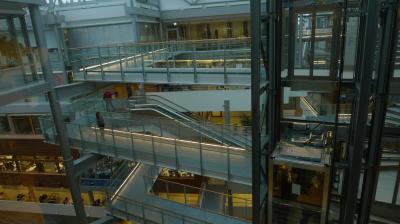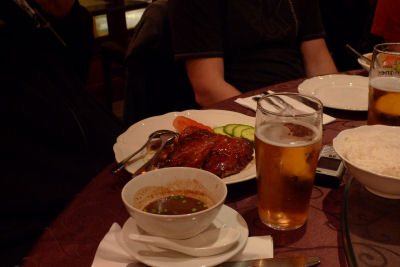KOffice Meeting Day Two
New day, new KOffice work. The team met for lunch at 8 and arrived in the office around 9. After Inge opened the day again everybody took a while to check mail and news. Then it was time for work.
Starting with Metadata
Starting at 10 o'clock Jos van den Oever gave a talk about using metadata in ODF 1.2 and how it could be used in KDE and KOffice applications. He introduced the Social Semantic Desktop to the team, going through the basic architecture. After Nepomuk and KDE technology he went through what ODF has in terms of Metadata support. Luckily the new ODF 1.2 standard builds strongly on existing standards and formats, and unlike the 1.0 standard it supports an arbitrary amount of metadata through RDF. KO GmbH has a team with Ben Martin and Tobias Hintze working to get metadata support in KOffice. More specifically they are enabling KWord to read and write metadata during loading and saving of 1.2 documents. They aim to to do it properly so even copy-pasting of text preserves metadata.
Bringing them together, ODF and RDF support makes it possible to store any type of data in your document, making office smarter. Combine some scripting with metadata and you can for example make a document which supports several languages, and upon opening it will show your local language. Not having to generate separate documents from a server but having it in one single document makes a lot of sense for companies who want to archive their documents.
As said, clever documents keep their metadata, and the same goes for parts of the text. Governments for example often copy around pieces of law, basically quoting it in various other policy documents. If those pieces of text could retain their original metadata they could point back to the original law. Upon opening the document scripts could help update the text or warn the user the law has been changed between the writing of the document and the reading of the opened document.
This technology can make documents far more powerful - small databases in themselves (in ODF 1.2, each ODF document is a so-called triple store, forming the basis of a semantic network). Within 50 days this work, which is sponsored by NLNet, will be implemented in KOffice and the developers can start experimenting with it and explore the posibilities.
End User Readiness
The second and last main subject of the sprint is End User Readiness. Inge led the discussion on this. Important here was that currently there is no clear agreement on the definition of End User Readiness. It was agreed that for all applications a persona, a virtual target user, will be defined. The team will focus on getting the application ready for that persona. As soon as it is, it is End User Ready. Of course the initial personas will have pretty moderate requirements. Newer versions will then target more advanced personas, organically moving up to professional users.
It took quite a while to create personas for all the applications. To speed the process up it was decided to try and use real people for the personas. These people will of course have to be willing to help by complaining as long as the application does not fulfill their requirements.
The team does not only rely on these personas and their own ideas and opinions. Support from the KDE usability and open usability teams has been promised, and Subash will try and see if Nokia can help out as well.
Finishing up
After the group photo the team went back to relatively quiet hacking and small discussions (leading to, among other things, this release plan).
Many team members had to leave quite early - after lunch the office quickly went quiet. The few still there continued working and developing a bit until the office had to be closed. As Thomas Zander, who helped Alexandra Leisse take care of the visitors, noted: "I must say this meeting really surpassed my expectations. We discussed more topics and even came up with several new plans and ideas. The previous meetings were still pre-2.0, and often focusing on past problems. Now we have our eyes on the horizon, and things look much brighter".
This seems a good note to end this article with.


